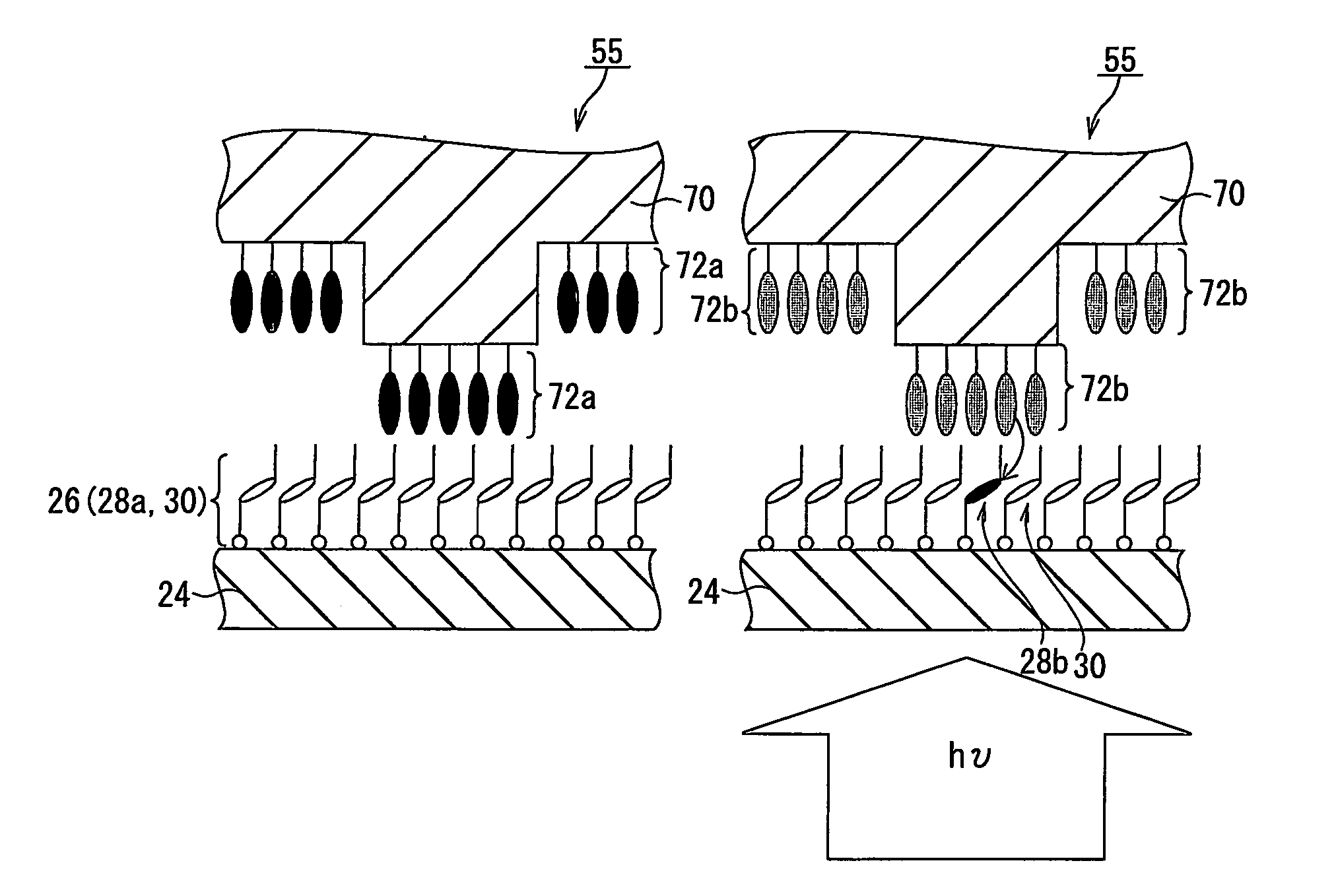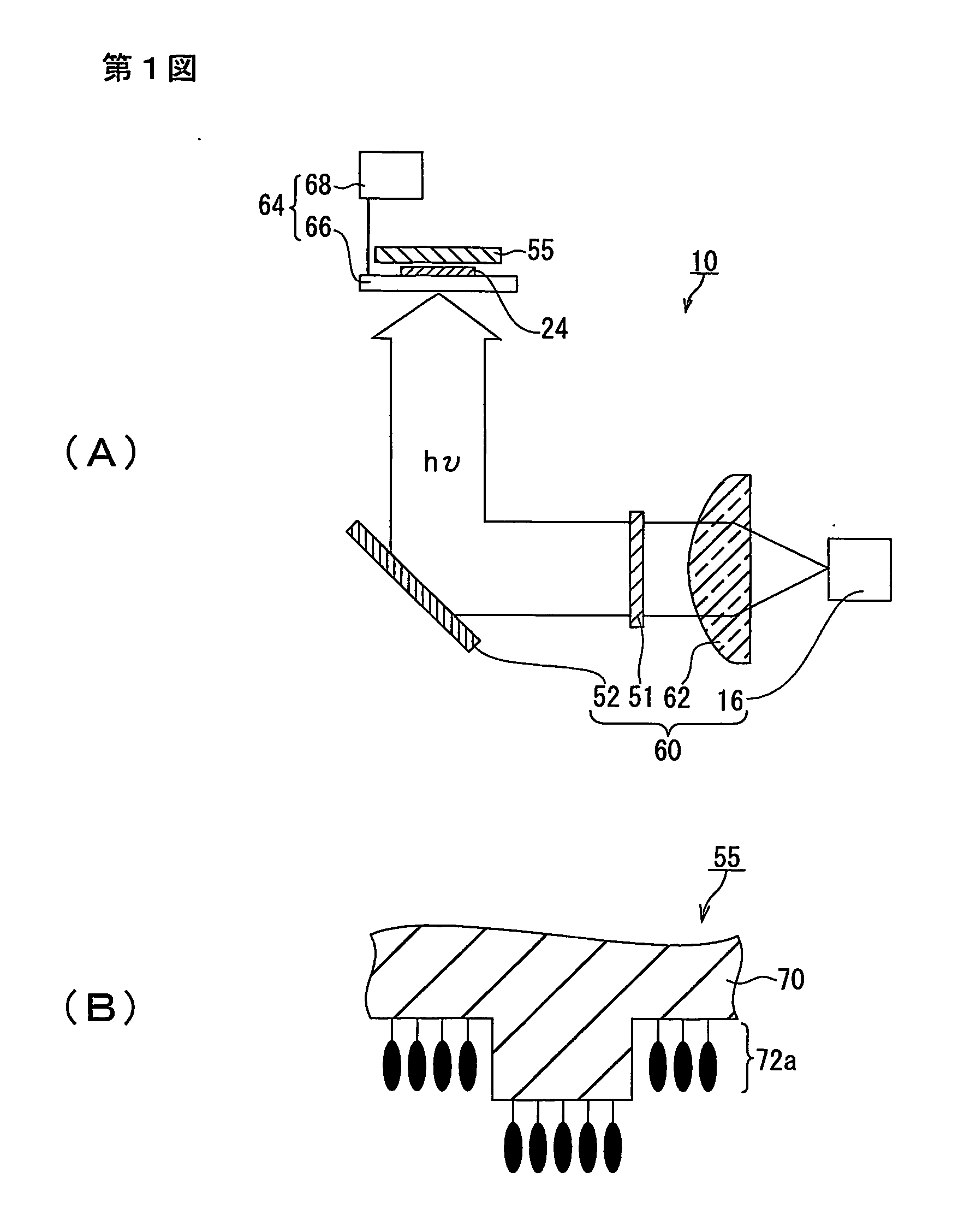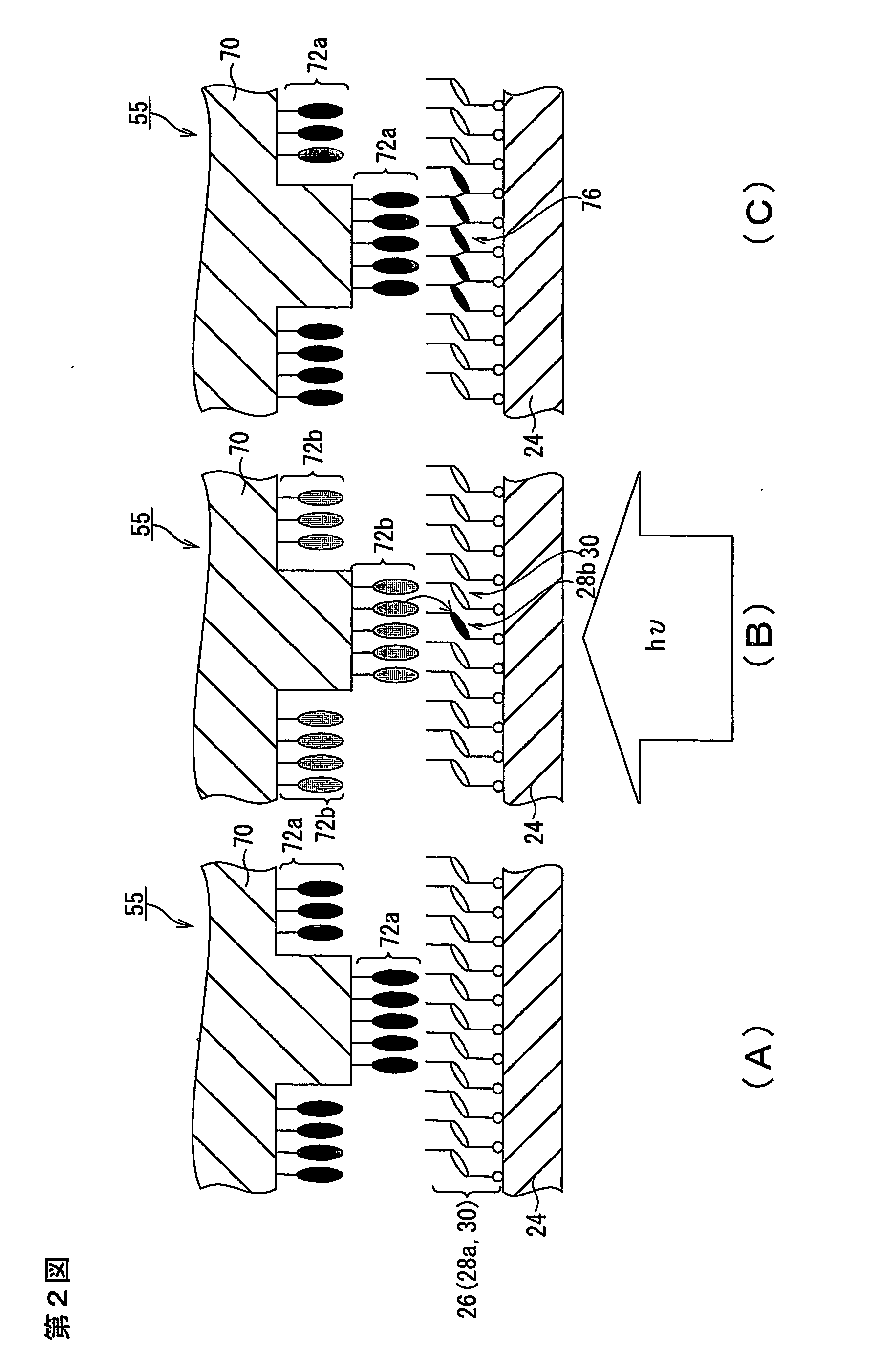Molecular bonding method and molecular bonding device
- Summary
- Abstract
- Description
- Claims
- Application Information
AI Technical Summary
Benefits of technology
Problems solved by technology
Method used
Image
Examples
first embodiment
[0081] A first embodiment of the present invention will be explained with reference to FIGS. 1 and 2. FIGS. 1(A) and 1(B) are partial cross-sections showing the configurations of the molecular bonding device of the present invention and its principal part. FIG. 2 is a simplified partial cross-section explaining the molecular bonding method of this embodiment.
[0082] As shown in FIG. 1(A), molecular bonding device 10 of this embodiment comprises principally support 70, intermediate excitation medium 72a and external energy source 60. Intermediate excitation medium 72a is fixed on support 70, and support 70 and intermediate excitation medium 72a make up mask part 55 of molecular bonding device 10 (see FIG. 1(B)).
[0083] In the sample configuration of FIG. 1(A), molecular bonding device 10 also comprises as a fixing member substrate 24 and fixing device 64 of substrate 24.
[0084] External-energy supply 60 comprises light source 16 as the external energy supply source, lens 62, filter 5...
second embodiment
[0127] The second embodiment of the present invention will be explained with reference to FIGS. 3 and 4. FIGS. 3(A) and (B) are partial cross-sections showing the configurations of the molecular bonding device of this embodiment and the principal part thereof in simplified view. FIG. 4 is a simplified partial cross-section which explains the molecular bonding method of this embodiment. This embodiment differs from the first embodiment primarily in that the support of molecular bonding device 100 is formed as a probe structure which is capable of scanning the substrate by means of a limited number of intermediate excitation mediums. Constitutional elements which are the same as constitutional elements which were already explained in the first embodiment will not be explained in detail.
[0128] As shown in FIG. 3(A), molecular bonding device 100 of this embodiment is provided mainly with probe 25, intermediate excitation medium 18a and external energy supply part 27. Probe 25 is compos...
third embodiment
[0178] The third embodiment of the present invention will be explained with reference to FIGS. 5 and 6. This embodiment differs from the second embodiment mainly in that the probe is provided with a photocatalyst as the intermediate excitation medium, and that molecules are arranged in specific positions using radical reactions caused by photoexcited energy transfer.
[0179] As shown in FIG. 5(A), apart from the configuration of probe 85 molecular bonding device 200 of this embodiment is similar in configuration to molecular bonding device 100 which was explained in the second embodiment, so a detailed explanation thereof will be omitted.
[0180] Probe 85 of molecular bonding device 200 of this embodiment will be explained in detail below.
[0181] As shown in FIG. 5(B), probe 85 is provided with support 86, which forms the body of the probe, and intermediate excitation medium 88a, which is fixed on support 86.
[0182] Support 86 of this embodiment is a glass nanopipette probe with a bor...
PUM
| Property | Measurement | Unit |
|---|---|---|
| Nanoscale particle size | aaaaa | aaaaa |
| Energy | aaaaa | aaaaa |
| Bond | aaaaa | aaaaa |
Abstract
Description
Claims
Application Information
 Login to View More
Login to View More - R&D
- Intellectual Property
- Life Sciences
- Materials
- Tech Scout
- Unparalleled Data Quality
- Higher Quality Content
- 60% Fewer Hallucinations
Browse by: Latest US Patents, China's latest patents, Technical Efficacy Thesaurus, Application Domain, Technology Topic, Popular Technical Reports.
© 2025 PatSnap. All rights reserved.Legal|Privacy policy|Modern Slavery Act Transparency Statement|Sitemap|About US| Contact US: help@patsnap.com



